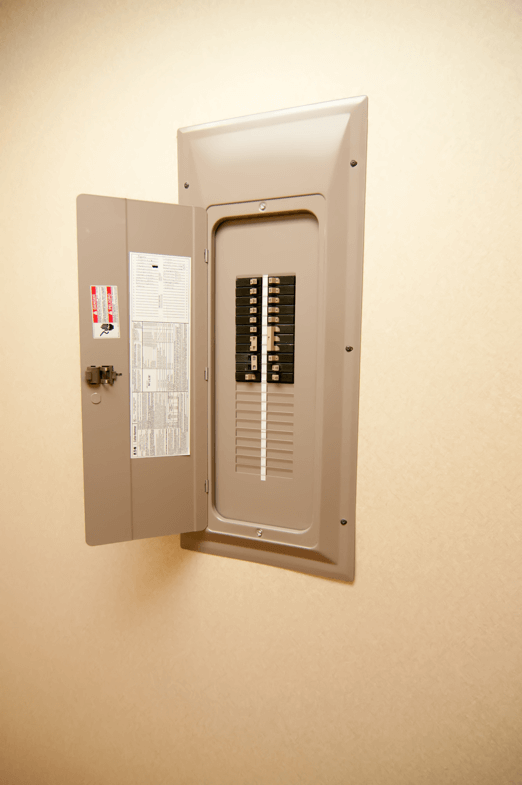Why Circuit Breakers Trip

A circuit breaker is designed to cut the flow of electricity and is thus essential to home safety. This switching device will cut the power, or trip, if too much electricity is flowing through a circuit or an excess current load is too much for it to handle. Turning off the electricity can prevent a lot of damage. Without circuit breakers, you would have no indication of a problem, or that electrical repairs are needed, and house fires would be much more common than they already are.
Tripping circuit breakers can be an inconvenience, but they can usually be switched back on, so long as the problem that led to the trip is resolved. Here are some of the most common reasons a circuit breaker has tripped or continues to do so:
A Circuit Is Overloaded
If a circuit is drawing more current than it’s designed for, it is overloaded. This happens when too many appliances, devices, or light fixtures on that circuit are on simultaneously. When an internal sensing mechanism heats up, it triggers spring-loaded, magnetic, or other components that break the electrical pathway to prevent wires from reaching dangerous temperatures. If the circuit breaker trips continuously, there is too much demand on the circuit; try to locate the device that’s drawing extra power and either turn it off or move it to another circuit.
A Short Circuit Is Detected
Inside an outlet, you have hot and neutral wires. When a hot and neutral wire touch, there is a short circuit. Sometimes this occurs when a hot wire touches another hot wire. Excess current is generated, overheating the circuit and triggering the breaker. Other warning signs include sparks, smoke, popping sounds, burnt smells, or blackened outlet faces. Causes of a short circuit include damaged wires, loose connections, bad plugs, and faulty switches or cords, or the problem may be within an appliance or lighting fixture itself.
There Is a Ground Fault
A ground fault presents in a similar way to a short circuit. It happens when a hot wire and grounding wire contact one another. Sometimes it’s caused by the hot wire touching metal or wood. If moisture or water is present, ground faults pose a serious risk of shock. The fault causes an increase in electrical flow to the point a circuit cannot handle the load. It is one reason circuit breakers trip, but don’t try to deal with the problem yourself. Call a professional electrician near you who has the experience and tools to safely find and correct the issue.
An Arc Fault Has Occurred
You will see a spark when there is an arc fault, which can signal a serious wiring problem. A loose screw terminal connection is one cause. When there is a spark between contacts in a wire connection, an arc can be a major fire risk. You can protect your home with an arc-fault circuit interrupter, or AFCI, which works very similar to a standard home circuit breaker.
Contact Your Los Angeles Electrician for Help
Express Electrical Services can properly install your wiring and appliances, and determine the cause of tripping circuit breakers to fix the problem and protect your home and family. We are the best electrician serving Los Angeles, Orange County, and Riverside County. Customers throughout Southern California depend on our experienced electricians every day. To learn more about how we can address tripping circuit breakers, keep your home/family safe, and improve energy efficiency, contact us at 855-976-9049 or request service on the web.

Leave A Comment